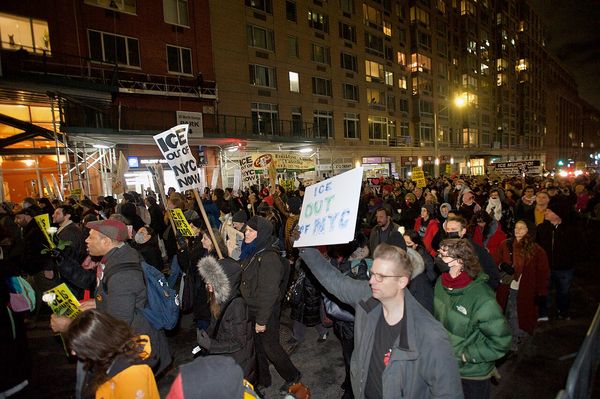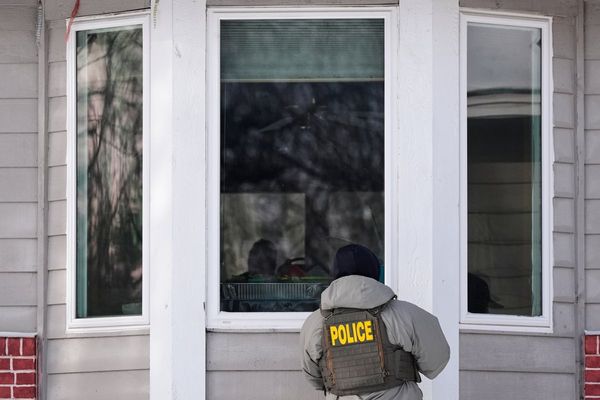
Last weekend, the Tough Mudder event tore up our local green space, Finsbury Park in Haringey, north London. Hundreds of people taking part in the private, military style mini-marathon and obstacle course churned up grass and left much of the park covered in wet, muddy pits.
Our local MP David Lammy branded it an “environmental disgrace”; Jeremy Corbyn said he was “disgusted”. The event won’t be taking place in the park again, and the company behind it has apologised and pledged to work with the council and residents to repair the damage.
Their help is welcome, but this isn’t just about a single event like Tough Mudder. Residents have had enough of their green spaces being treated like an industrial park. Finsbury Park was opened 154 years ago as a space for residents of the city to escape their dense urban life and find clean air. It ostensibly keeps that purpose today, but it is increasingly being commercialised by the local authority, which is responsible for maintaining and protecting it. The Friends of Finsbury Park don’t think that’s right.
Private events – which often fence off large areas of the park – have multiplied in recent years. In some contexts, this may be a reasonable tradeoff, providing there is good management and community consent. Many enjoy a funfair, or a locally focused festival. But the scale, damage and frequency of recent events has grown and it is concerning.
An investigation in 2019 revealed that for 41 days of summer, access to parks in Haringey was disrupted. (The figure was worse in many other London boroughs.) Elaborate stage setups and event facilities remove access weeks before and after the weekends themselves. Haringey council’s own research highlights the lack of economic value returned to nearby businesses, and finds that most attenders come from far away.

The disruption caused by these events can be immense. More than 300,000 people turned up to Finsbury Park’s big summer events last year and the council is considering extending them for the next five years. More than 70 artists – few who could claim to be local – performed across a number of stages; we counted 37 industrial-sized generators (enough to power a small town) burning bio-diesel; and, hundreds of vehicles that are not typically allowed in the park came and went each day, often idling near play space. A military-style fence, complete with a “moat”, towered 3 metres-high around the southern half of the park through much of June and July, reducing public space and creating an oppressive feel.
While some facilities stay open, many local people are put off using them, and others facilities close. Last year, recently privatised tennis courts in the park, presumably also in need of funding, leased their space to the event to provide a base for a toilet block for festivalgoers.
The impact endures long after the trucks leave. Two weeks ago, almost nine months on from last year’s events, some of the damage had finally been restored, and then the impact of Tough Mudder damaged it all again. We think there are plenty of better venues in London, that are more physically established, that can be properly policed and effectively managed and crucially, don’t involve the destruction of a supposedly public park.
Events of this scale are large corporate machines that roll in, sell their goods and roll out. They provide a non-trivial – up to £1m – income stream to our local authority. We know that the council faces tight budgets and funding gaps, but other local authorities fund their green spaces without such impact on community and flora and fauna. Many question if the benefit from the current income stream is worth the damage and impact from it, or whether it really trickles back to the local community in the form of a well-run and accessible park.
The ONS reports that for some wards surrounding Finsbury Park, up to 37% of dwellings have no garden. That’s two out of five homes. For these households, and many other people living in small flats nearby, Finsbury Park is their garden, their space for exercise, to socialise, to just be; for all ages, from all backgrounds.
We have some reason for optimism. We’ve raised £50,000 for a new skate park that we’re developing in partnership with the council; we’re working with the Metropolitan police to improve safety; and hope to run more community ecology activities. We also think the council – if it chose to – could better “coach” much smaller events.
The council says it aspires to improve the environment of Haringey, and we see it making progress on elements of this green agenda, but on this issue they have messed up and need a new approach. If this funding model leaves our parks broken, shouldn’t we try something else, and ask for better managed, better funded public areas in London?
For us, the lesson is not really about the mud: it’s that residents have the right to enjoy their green spaces. It’s about funding our green spaces properly, and effectively managing them. If you’re local – join us! If you’re not, what can you do to make your green space better?
Tom Graham is co-chair of the Friends of Finsbury Park







